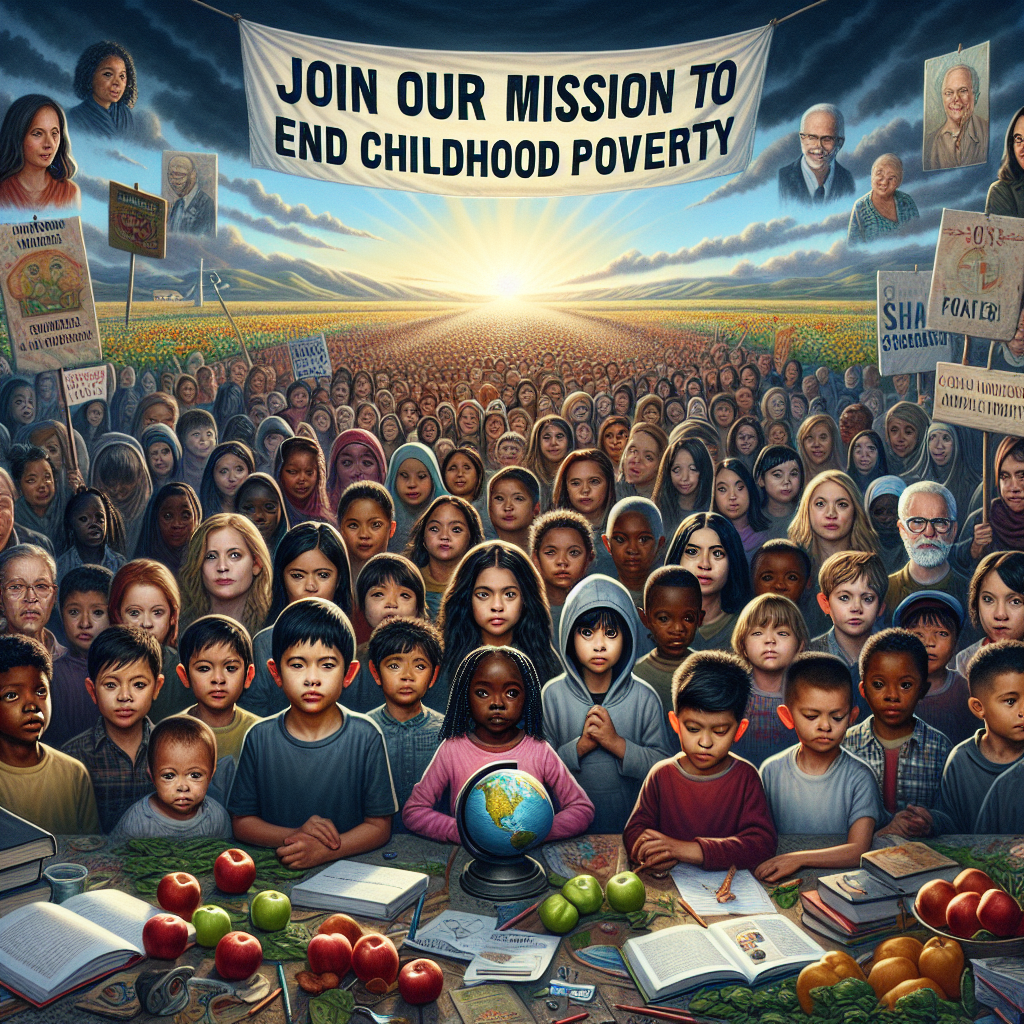Childhood poverty remains one of the most urgent moral and practical challenges of our time. It robs children of their fundamental rights, stifles potential, and perpetuates cycles of disadvantage across generations. But as global evidence proves, this crisis is solvable. Here’s how we understand the problem—and how you can join a proven movement for change.

🌍 The Stark Reality of Child Poverty
- Global Scale of Suffering
- 1 in 6 children in Australia lives in poverty—761,000 young lives deprived of essentials like food, stable housing, and educational opportunities .
- Worldwide, nearly 900 million children experience multidimensional poverty, lacking access to clean water, healthcare, or education .
- In conflict zones like Ukraine, 5.7 million school-age children face disrupted education and trauma, exacerbating poverty’s impacts .
- Hidden Inequalities
Poverty isn’t just about income. It includes:
- Material deprivation: Overcrowded homes, lack of quiet study spaces, and frequent moves due to housing insecurity .
- Social exclusion: Inability to participate in sports, excursions, or community activities .
- Discrimination: Marginalization based on race, gender, disability, or migration status leaves children further behind .
- Lifelong Consequences
- Poor children are 7× more likely to drop out of school .
- Malnutrition and stress impair brain development, limiting future earning potential .
- Without intervention, childhood poverty costs economies trillions in lost productivity and social services .
✊ Global Progress: Proof That Change Is Possible
Despite challenges, 20 countries have halved multidimensional child poverty since 2000 . Key lessons from their success:
💡 Effective Policies Driving Change
Table: Country Successes in Reducing Child Poverty
| Country | Key Intervention | Impact |
|---|---|---|
| Peru 🇵🇪 | Cash transfers to families | Increased school attendance & healthcare access |
| Senegal 🇸🇳 | Conditional cash programs | Empowered families to invest in children |
| Poland 🇵🇱 | Expanded public spending on family benefits | Sharp reduction in material deprivation |
| Bangladesh 🇧🇩 | Inclusive economic growth policies | Met children’s basic needs at scale |
- Education as a Lifeline: The EU allocates 10% of humanitarian aid to education in emergencies, ensuring learning continues during crises .
- Social Protection Works: Programs like CHIP (Children’s Health Insurance Program) in the U.S. have cut uninsured rates among children, but require sustained funding .
🔍 Why Previous Efforts Fell Short
Well-intentioned initiatives like the U.S. No Child Left Behind Act (2002) focused on school accountability but ignored poverty’s root causes:
- Overlooked needs like nutrition, mental health, and safe housing .
- Labelled high-poverty schools as “failing” without providing adequate resources or support .
- Failed to address racial inequities: 45% of Black children in the U.S. attend high-poverty schools .
“Poverty is an educational issue. Children in poverty underachieve not due to inability, but unmet needs.” —
📢 Our Mission: A 4-Part Blueprint for Action
1. Prioritize Early Childhood Interventions
- Fund evidence-based home visiting programs (e.g., MIECHV), which reduce child abuse and improve school readiness .
- Scale preschool access to close development gaps before age 5 .
2. Strengthen Social Safety Nets
- Cash Transfers: Provide direct support to families, proven to reduce poverty by 40% in some regions .
- Universal Health Coverage: Extend CHIP funding to prevent 2 million U.S. children from losing insurance .
3. Transform Schools into Community Hubs
Modeled after NYC’s Chancellor’s District (1996-2003):
- Extended learning time and after-school programs.
- Class size caps (20 students in K-3).
- Integrated health and social services .
4. Amplify Child Participation
- Adopt models like the EU Child Participation Platform, empowering youth to shape policies affecting them .
- Invest in digital safety (e.g., the EU’s Digital Services Act banning harmful content targeting children) .
✨ Join the Movement: How You Can Help
- Advocate
- Demand legislators prioritize child-sensitive policies (e.g., 4-year CHIP/MIECHV extensions, not stopgap fixes) .
- Support campaigns like the Global Coalition to End Child Poverty .
- Educate & Mobilize
- Share data on solutions (e.g., country success stories) to counter apathy.
- Join local initiatives like Australia’s End Child Poverty Campaign .
- Donate Strategically
- Fund programs with evidence-backed impacts:
- Early childhood education
- School nutrition
- Mental health supports
“Ending child poverty is a policy choice. It requires courage, not charity.” — Global Coalition to End Child Poverty
💫 Together, We Can Build a Fairer Future
Childhood poverty is neither natural nor inevitable. From Poland’s welfare reforms to Senegal’s cash transfers, we have the tools to end it. What’s missing is collective will. By uniting across sectors—governments, NGOs, educators, and advocates—we can ensure no child is left behind.
From Despair to Dreams: Empowering Childhood Through Your Generosity
The journey from childhood despair to realized dreams is a profound transformation fueled by compassion, opportunity, and community support. This report synthesizes insights from global initiatives, psychological expertise, and lived experiences to illuminate how strategic generosity unlocks human potential in marginalized children.
1. Understanding Childhood Despair: Barriers to Thriving
Childhood despair manifests through systemic inequities and traumatic experiences:
- Material Deprivation: Poverty denies children basic rights—food, shelter, education—forcing them into dangerous survival cycles (e.g., Anna, 15, driven to sex work in Zambia) .
- Trauma and Violence: Sexual abuse, parental neglect, or witnessing domestic violence shatter safety and self-worth. As one survivor shared, “Innocence seems like a distant dream buried beneath layers of suffering” .
- Developmental Risks: Teens making self-destructive choices (drugs, school dropout) often lack emotional support or boundaries, exacerbating their spiral .
- Systemic Neglect: Children with disabilities face stigmatization and inadequate resources, leaving parents “burning between hope and despair” as they fight for basic dignity .
2. Dreams as Catalysts: Igniting Potential Through Opportunity
Dreams anchor resilience. Research and case studies confirm their transformative power:
- Creative Expression: Arts programs like The Big Dreams Project help disadvantaged children “discover appreciation for drama and dance,” building confidence and individuality. As Anthony Moore notes, “The arts unlock possibilities for every child” .
- Aspirational Vision: Childhood fantasies (e.g., imagining racecar beds or new cars amid poverty) fuel determination to escape scarcity. Jay Floyd credits such dreams for his journey from “scarcity to empowerment” .
- Holistic Education: Programs like Zambia’s DREAMS initiative combine mentorship, health education, and vocational training. Rita (17) shifted from risky behavior to pursuing journalism: “I value myself more now” .
3. Generosity in Action: Models of Effective Empowerment
Strategic generosity bridges despair and dreams through:
A. Boundary-Setting with Love
For teens in crisis, parents must “take charge, not control.” This means:
- Enforcing rules with empathy: “You can’t live here if you use drugs; we love you too much to enable this” .
- Balancing consequences with connection: “Enjoy your child outside the problem—share interests without distrust” .
B. Holistic Community Programs
Successful initiatives prioritize:
- Safety Nets: Lotus Rescue provides essentials (food, shelter) as foundational rights .
- Economic Empowerment: DREAMS offers microloans; Elisa (23) started a business after surviving rape: “I don’t need to rely on anyone” .
- Spiritual & Emotional Care: Biblically rooted groups like Compassion International address “material, social, and spiritual lack” through child sponsorship .
C. Amplifying Voices
- Children with disabilities thrive when parents refuse “no for an answer,” demanding inclusive opportunities .
- In Zambia, girls mentor peers to “speak up and fight for better futures,” creating cascading impact .
4. Your Generosity at Work: Evidence of Transformation
Data and stories prove generosity’s ripple effect:
| Initiative | Impact Metrics | Human Story |
|---|---|---|
| DREAMS (Zambia) | 80% reduced HIV risk; 75% economic skill gain | Matildah (19) trains others to escape abuse |
| ChildFund Alliance | 23M+ children served across 70 countries | Arts programs rebuild post-pandemic hope |
| Biblical Child Sponsorship | “Pure religion” defined as caring for orphans | Rita’s journalism dream revived through mentorship |
5. Answering the Call: How You Can Catalyze Change
Your generosity fuels tangible pathways:
- Sponsor a Child: Organizations like Compassion International pair donors with children for holistic development (education, healthcare, spiritual growth) .
- Support Arts/Education: Fund programs like The Big Dreams Project, where $50/month provides virtual learning tools .
- Advocate for Inclusion: Demand policies supporting disabled children’s rights. As one parent urges, “Spend time with us; cry with us” .
- Mentor Locally: Guide at-risk youth using boundaries + empathy: “Parent the child you have—not the one you wish you had” .
“We are candles burning between hope and despair, faith and doubt. By being here, at peace, we help the world cope with what it cannot understand.”
Conclusion: A Future Written in Hope
Despair is not destiny. Every child carries dormant dreams—Anna’s hope for education, Rita’s journalistic ambition, Jay Floyd’s vision of financial freedom. Your generosity fans these sparks into flames. As ancient wisdom teaches: “Whoever is kind to the poor lends to the Lord, and He will reward them” . By investing in holistic empowerment, you co-author stories of resilience. The curtain rises on a new generation, ready to dream.

Your point of view caught my eye and was very interesting. Thanks. I have a question for you.
Discover Your New Favorite Tee — at nayatshop
https://nayatshop.com/shop/